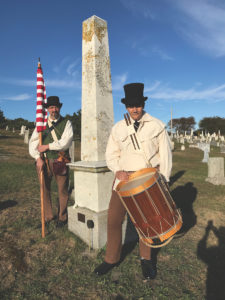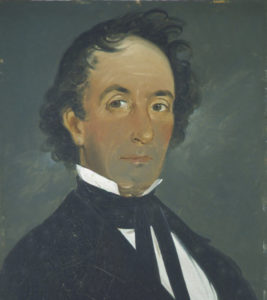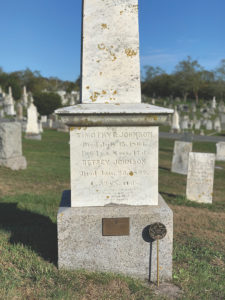PROVINCETOWN — The pride with which this town has always acknowledged the sacrifices of its veterans is evident in the many tributes one sees here.

Keeping vigil over Commercial Street at town hall, the Doughboy Monument beckons passersby to reflect on the more than 250 Provincetown residents who served in World War I. The town’s quota was 38. Both the Lewis Armstrong Young V.F.W. Post and the Morris-Light American Legion Post — named for Louis Joseph Morris and Antonio Luiz Da Luz (later Anglicized to “Light”) — honor World War I veterans. Sharing the grounds at town hall are the bronze honor rolls with row upon row of the names of those who answered the call since World War II.
In the Gifford Cemetery the handsome Civil War Monument — a marble obelisk carved with service symbols that was installed in 1867 when the horrors of the war were still palpable — pays tribute to the 350 men who joined the Army and Navy. Nineteen died from disease or in the line of duty. At the time, the town’s population was barely 3,000.
From the East End to the West, town squares are named for veterans, and across the harbor a lonely wooden cross stands on the dune next to Long Point Light, a tribute to artist Charles Sinkler Darby, who was killed in action during World War II. In the garden of the Church of St. Mary of the Harbor, a memorial cross and plaque are reminders of the 40 officers and crew of the U.S. Navy submarine S-4 who perished on Dec. 17, 1927 in the waters off Wood End when the sub was accidentally rammed by a Coast Guard cutter.
And tucked under the shade of a tree in the Alden Old Cemetery, an elaborately carved stone honors the service of a young German-born Navy coxswain, Klaas Djarken Wessels, who accidentally drowned in Provincetown Harbor in 1898 during the Spanish-American War. The Josiah C. Freeman G.A.R. Post — named for the Civil War sailor from Provincetown — gave Wessels a military funeral.
For all of Provincetown’s veterans who have been remembered, until recently a number had been left behind. In 1877, when the original town hall on High Pole Hill burned to the ground, the fire took with it many of Provincetown’s earliest records. As a result, history has been largely silent on 18th-century community life and the town’s response to the Revolutionary War and the War of 1812.
The Revolutionary War service of eight Provincetown men, all of whom are buried in the historic Winthrop Street Cemetery, has now been documented and verified. Each of their graves will receive a bronze marker. A moving ceremony was held for the first seven on Patriots Day 2018. The eighth veteran, Seth Nickerson — who served Provincetown during the war as a selectman — will be recognized on Veterans Day, Nov. 11, 2019 at 11:00 a.m.
Private Johnson, Age 15
A remembrance ceremony and reception at Seashore Point on Oct. 26 paid tribute to another early veteran whose service during the War of 1812 had been overlooked. It has now been documented by the National Society United States Daughters of 1812. A bronze plaque and 1812 medallion were unveiled at the grave of Timothy Parker Johnson in the Provincetown Cemetery. To date, he is the town’s only known War of 1812 veteran.

Johnson’s service took place a decade before he arrived in Provincetown in 1825. Born in Chatham (now East Hampton), Conn. on Oct. 29, 1799, he was the third of 10 children. He was drafted at New Haven on Nov. 11, 1814 at age 15 and served as a private and drummer boy in the Connecticut Militia under the command of Lt. Horace Beach. He was honorably discharged — on account of his youth — on Feb. 10, 1815.
Timothy married Betsy Hager of Waltham in 1824. The first of their 10 children, Susan, was born in Boston on Aug. 9, 1825. Shortly after her birth the Johnsons arrived in Provincetown, a town of 1,200, where Timothy established himself as a sail maker. In 1827 his younger brother, Joseph Prosper Johnson (1814−1891) arrived in Provincetown and apprenticed himself to Timothy.
The principal industries in town were cod fishing and salt making. The three-mile beachfront was crowded with windmills pumping salt water into evaporation vats. The land was uncultivated. Simple one-story houses were set on piles so that the driving sand might pass under them. There were no roads, no walkways, and no wharves. Grand Bankers spent the winter months hauled up and nestled into holes on the beach.
Johnson was among the early entrepreneurs who, during the mid−19th century, transformed Provincetown into a preeminent port. To accommodate the growing whaling, cod, and mackerel fleets as well as the thriving waterfront industries, more than 50 wharves were built between 1838 and 1858, among them Timothy Johnson’s wharf (between Johnson and Arch streets), purchased from the Cook family in the early 1840s and extended in 1846.
Timothy’s business interests included salt works, ships’ ballast, and the ownership of Ocean Hall (later known as the Central House and now the Crown & Anchor), built for public entertainments. Between 1841 and 1848 he was the managing owner of the 162-ton brig Gem, one of Provincetown’s early whaling vessels. Civic-minded, in 1847 Timothy served on the committee to build a new Universalist meeting house and in 1849 began a two-year term as selectman.

Johnson died in Provincetown on July 15, 1864. He had previously received a bounty land warrant from the U.S. government as a reward for his war service, and in 1879 a widow’s pension was provided to his wife, Betsy. She lived at 341 Commercial St. (now 368) until her death in January 1892. Seven children survived her, five of whom had moved to Waseca, Minn.
#
Hilde Oleson, who is 96 and a resident at Seashore Point, wrote the following commemorative poem for the ceremony on Oct. 26.
Timothy
We are the fortunate ones.
We are standing in an exceptional town
Of renowned beauty and acceptance.
The man we honor here today
Came to a hamlet with only one or two trees
A few houses, truly a one-horse town.
His memory takes him back to a night
When he was a soldier.
They are gathered around the fire,
A circle of stones crudely formed into a fire-place
It is Timothy’s last night as a soldier.
He has been marching in formation, drumming a rhythm
For the soldiers for several months.
They are fighting the War of 1812.
It is a war he does not totally understand
But at 15 he knows the need to be free, to make your own decisions
He loves his country and was proud to be drafted and serve.
Now he is glad to be going home.
In a few years he will find his own freedom,
March to his internal drummer
And move to Provincetown.
He married the sweetest girl he knew, began a family
And a career as a sail-maker.
Once more he put forth all his effort
And became an early entrepreneur
Even as Provincetown grew as a town,
Becoming an important asset to the shipping world,
So he grew as a man,
Diverging into many areas we still know
That his skill and perseverance helped to build.
We worship in the UU, accept the wharves, the paved roads,
The many trees, the bustling businesses.
All part of his dream of Provincetown.
Still many of us feel the magic of Provincetown,
Thank him for his life and honor him with our own love for Provincetown.



